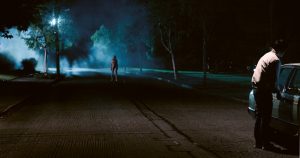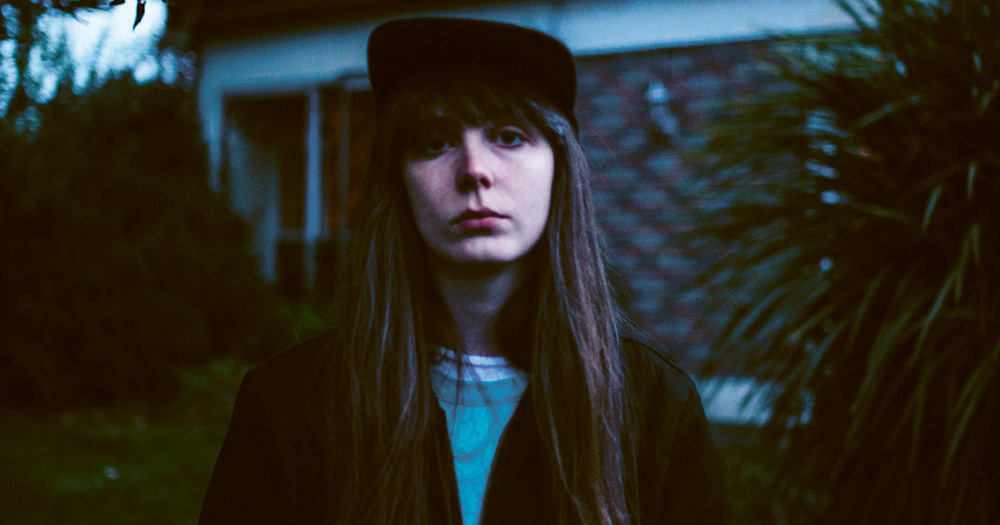Sitting down to watch Kate Dolan’s Catcalls before beginning this article, headphones on, fresh cup of coffee in hand, this horror fanatic had seen it all and then some. Yet at a certain moment in the fantastically effective short, I jumped so hard, the aforementioned coffee launched into the air, spilling across my desk.
It’s not the first huge reaction the film has received, not by a long shot. At its very first screening in the Cork Film Festival as part of a showcase for Film Board funded shorts, the no-nonsense full-on horror film stuck out like a sore thumb amongst the family dramas and whimsical documentaries. “There was a man sitting behind me,” Kate explains, “and he went, ‘What…the fuck..?’”
Music to the ears of any horror creative.
Love them or loathe them, in recent years, horror films have become far more prestigious than they’ve been been for a while, with Get Out landing a Best Picture Oscar nomination and Hereditary gathering up a slew of independent film awards. And it’s female directors who are creating some of the most interesting work, for instance- Julia Ducournau’s stunning cannibal masterpiece, Raw, and fellow Irish writer and director Aislinn Clarke’s The Devil’s Doorway – centering on demonic doings in a Magdalene laundry. It’s fitting then that Kate and I chat during Women In Horror Month – an international initiative to showcase the under represented work of women in the the horror industry, and also just before Dublin holds its very own WIHM Festival.
Kate tells me, “I think in any genre of filmmaking women are under represented, but probably horror moreso. I feel it’s seen that female filmmakers are often geared toward drama, they’re not as trusted with action or thriller or maybe horror. But there are a lot of really strong horror filmmakers who are women paving a way at the moment, and that’s really exciting.”
In a perfect example of how horror was once seen as a dirty word, Kate explains, “In film school they kind of turned us off horror. I think then, as opposed to now, horror was seen as not very prestigious. Trashy. They wanted us to make films that would play at Sundance, so they would push us into drama. So I felt ‘Okay, I have to make drama to be taken seriously.’”
After film school Kate achieved just that, making an impression with her short film, Little Doll. Featuring a bunch of eight and nine year-old actresses, it looks at “the first realisation of thinking that you might be gay when you’re too young to understand what’s going on.”
“I’d been to a few LGBT+ film festivals and I’d seen shorts but none of them had focused on the early stages of someone trying to understand what’s going on. I wanted to make something that showed that point in time. While I was writing the script, I asked my gay friends the question – when did they know themselves they were gay and then when did they come out? Most people knew between the ages of four and ten but didn’t come out until between 16 and 20. Personally, I kind of knew at six but didn’t understand it, and so then just suffered through the next ten years of life trying to understand and wondering – ‘will this thing go away?’ So I wanted to draw attention to that.
We played at a few kids’ film festivals, as it is aimed at a younger audience, and a lot of parents came up to me afterwards and said ‘I never thought that a kid that age could be thinking about that’. So I’m glad we made it.”
That positive experience working with child actors paid off, as Kate would go on to make commercials with children before collaborating on a music video with the band Pillow Queens – the cover stars of this issue of GCN. “I always said I wanted to do something for them. When ‘Gay Girls’ came along they said you have to do this video because obviously, like, we’re all lesbians, it only makes sense! They had the idea of people mitching off on their communion.”
A charming and utterly fantastic video featuring a communion dress clad gang of girls eating chips, drinking Cadet and rolling down hills, you can’t help watching without a smile breaking across your face – a complete reversal of the reaction anyone who watches Catcalls will have. And like with most effective works, the inspiration came from a disturbing real life moment.
“One night I was walking home with a friend of mine and a guy pulled up and asked us for directions. He was masturbating in his car. The really sinister thing is me and my friend, we look younger than we are, so that added a weirdness to it. We got his licence plate number and the guards found him. But they told us afterwards when they went to his house to tell him ‘we know it’s you’, he was crying, and his wife was in the house, and that sounded really grim. That really interested me, how you can be really intimidating, because we were so scared, it was a really isolated road and we were by ourselves, but then it just flipped, and he was so vulnerable. So Catcalls is basically a horror take on that event.”

Screening at horror film festivals across the world, the reaction, not just to the film, but also to the filmmaker has been heartening. “I was at film festivals for drama and there’s a kind of hierarchy over who has made better films, or more arty films, and if you’re a horror playing at those kinds of festivals, you’re put in the horror corner and people don’t see you as a prestigious film maker. But when you go to the horror film festivals, Fantastic Film Fest was amazing for example, even though there were much more men there, they were more welcoming, because you have an immediate common ground with horror. Once you know a few horror films that you love you can have a conversation with anyone. Rather than ‘what have you done’, it’s more ‘what have you seen’. It’s nice in that way.”
One area in which the genre still struggles is in the lack of quality queer horror films. Apart from Norway’s truly fantastic Thelma and Canada’s recent What Keeps You Alive, strong LGBT+ led shockers have been light on the ground. Kate agrees, “Queer filmmaking always gets pigeon holed into the LGBT+ niche, because if the film’s about gay people, the story then is about them being gay, you can’t just have them working in a horror space. It’s tricky. I don’t think we’ve quite gotten out of that yet.”
Kate hopes to challenge that with the new film she is currently writing which features queer characters, and, thankfully, she’s not done with the genre yet – “I feel like what’s the point in making something if you’re not challenging people’s perceptions. Horror you can hide messages in a fun and thrilling way and it doesn’t feel too preachy. That’s why I love it.”
For this future viewer, an Irish queer horror film can’t come fast enough.
I’ll just make sure not to be holding a coffee while watching.
This article was originally published in GCN Issue 351. Click here to read more.
© 2019 GCN (Gay Community News). All rights reserved.
Support GCN
GCN is a free, vital resource for Ireland’s LGBTQ+ community since 1988.
GCN is a trading name of National LGBT Federation CLG, a registered charity - Charity Number: 20034580.
GCN relies on the generous support of the community and allies to sustain the crucial work that we do. Producing GCN is costly, and, in an industry which has been hugely impacted by rising costs, we need your support to help sustain and grow this vital resource.
Supporting GCN for as little as €1.99 per month will help us continue our work as Ireland’s free, independent LGBTQ+ media.
